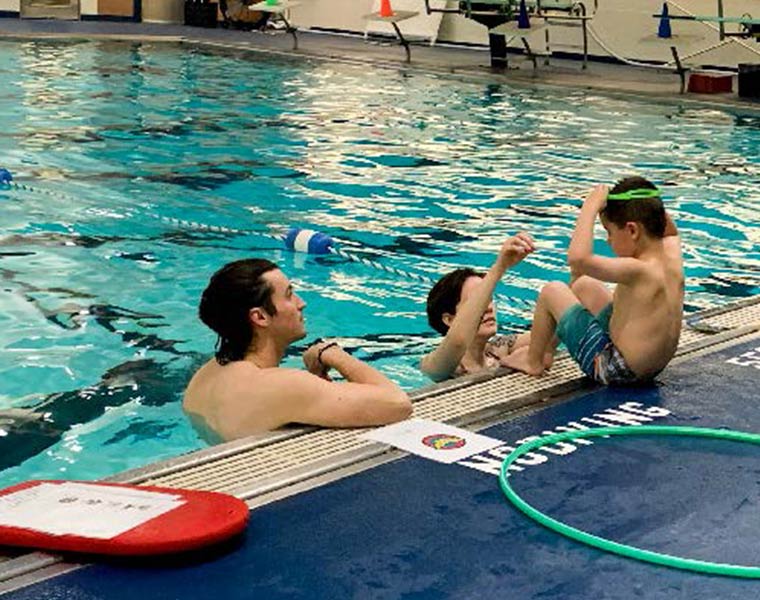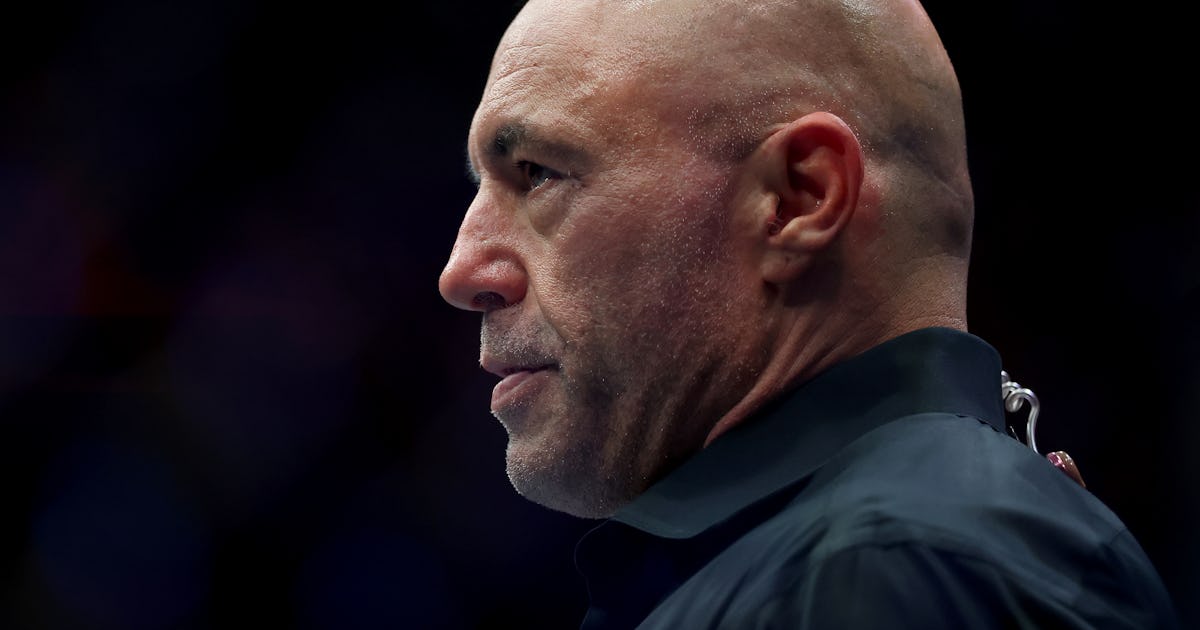Neurocrine Biosciences Presents New Analysis of CAHtalog® Registry Showing Most Patients with Classic Congenital Adrenal Hyperplasia Experienced High Glucocorticoid Exposure, Suboptimal Disease Control or Both at ENDO 2025
, /PRNewswire/ -- Neurocrine Biosciences, Inc. (Nasdaq: NBIX) today announced results from a new analysis using real-world data from CAHtalog®, a comprehensive registry of patients with classic congenital adrenal hyperplasia in the United States. The analysis demonstrated significant variability in glucocorticoid treatment regimens and frequent changes in health status and outcomes over time in both pediatric and adult patients. These results were presented at the Endocrine Society's Annual Meeting, ENDO 2025, in San Francisco.
"The CAHtalog data revealed just how dynamic and unpredictable disease control can be for people with classic congenital adrenal hyperplasia, with most experiencing elevated glucocorticoid exposure and/or loss of androgen control at multiple points throughout their lives," said Sanjay Keswani, M.D., Chief Medical Officer, Neurocrine Biosciences. "This analysis emphasizes that achieving disease control today, often with the use of high-dose glucocorticoids, offers no guarantee of maintaining disease control long term and underscores the ongoing complexity of managing classic congenital adrenal hyperplasia over a lifetime."
While glucocorticoid (GC) therapy is essential to replace cortisol deficiency in patients with classic congenital adrenal hyperplasia (CAH), achieving hormonal control using GC therapy alone requires supraphysiologic doses to reduce elevated adrenocorticotropic hormone (ACTH) and androgen levels. Developed in partnership with the CARES Foundation, the CAHtalog (Congenital Adrenal Hyperplasia: Patient and Clinical Outcomes in Real-World Practice Settings) registry was established to characterize longitudinal treatment patterns, natural history and impact of CAH. This latest analysis specifically examined patterns of GC use and androstenedione (A4) levels over time in pediatric and adult participants.
In this most recent analysis, data were examined from 98 patients, including 37 adults, 42 children and adolescents and 19 individuals who contributed data as both children and adults. Importantly, this analysis was conducted using data collected prior to the commercial availability of CRENESSITY® (crinecerfont) and does not include any CRENESSITY treatment data. GC treatment records were paired with the nearest available A4 laboratory values. GC doses were classified as "higher" (pediatric: >11 mg/m2/d hydrocortisone equivalents [HCe]; adult: >20 mg/d HCe) or "lower" (pediatric: ≤11 mg/m2/d HCe; adult ≤20 mg/d HCe). A4 levels were categorized as "higher" (≥upper limit of normal [ULN]) or "lower" (<ULN). Four health states were defined by combinations of GC dose and A4 level: (1) lower GC/lower A4, (2) lower GC/higher A4, (3) higher GC/lower A4 and (4) higher GC/higher A4. These states were analyzed in patients with at least three matched GC-A4 records to evaluate patterns of treatment intensity and hormonal control over time.
Key findings from the analysis showed considerable variability in GC regimens among patients and frequent transitions across health states, most of which were characterized by higher GC doses and/or elevated A4 levels. Even when patients achieved a health state with low GC doses and A4 levels within the normal range, this state was often short-lived.
Among patients eligible for the health state transition analysis (n=63), 88.9% experienced at least one health state change, and 58.7% underwent three or more changes (Figure 1). These transitions were observed across a broad age range (0 to 67 years), with a median observation period of 8.6 years. Nearly all patients (95.2%) entered a suboptimal health state, which was defined as receiving high GC doses and/or having elevated A4 levels at least once during their follow-up period.
"These real-world findings reinforce what we know about the dynamic nature of CAH management, where patients' treatment needs are constantly evolving," said Dina Matos, Executive Director, CARES Foundation. "The data clearly show that even when individuals achieve disease control with glucocorticoid treatment alone, maintaining that control over time remains a significant challenge. This highlights the importance of continued monitoring and the need for advanced therapeutic options for patients living with CAH."
Additional presentations at ENDO 2025 included:
Title | Oral Presentation |
[NEW] Crinecerfont Allows for More Physiologic Glucocorticoid Treatment with Reduction of Androstenedione to a Normal Range in Adults with Classic Congenital Adrenal Hyperplasia: Post Hoc Analyses of the CAHtalyst Adult Study | OR07-04 |
Crinecerfont Maintains Reductions in Serum Androstenedione Levels and Glucocorticoid Doses in Children and Adolescents with Classic Congenital Adrenal Hyperplasia: 1-Year Results from the CAHtalyst Pediatric Study | OR07-05 |
Title | Poster Presentation |
[NEW] Crinecerfont Maintains Serum Androstenedione Levels with Reduced Glucocorticoid Doses in Adults with Classic Congenital Adrenal Hyperplasia: 1-Year Results from the CAHtalyst Adult Study | SUN-415 |
[NEW] Crinecerfont Maintains Adrenocorticotropic Hormone and 17-Hydroxyprogesterone Levels with Reduced Glucocorticoid Doses in Adults with Classic Congenital Adrenal Hyperplasia: 1-Year Results from the CAHtalyst Adult Study | SUN-417 |
[NEW] Crinecerfont Improves Clinical Outcomes in Adults with Classic Congenital Adrenal Hyperplasia: 1-Year Results from the CAHtalyst Adult Study | SUN-416 |
[NEW] Crinecerfont Shows Favorable Trends in Improving Weight-Related Outcomes in Adults with Classic Congenital Adrenal Hyperplasia: 1-Year Results from the CAHtalyst Adult Study | SUN-405 |
[NEW] Evaluation of Potential Drug-Drug Interactions with Crinecerfont | SUN-440 |
[NEW] Crinecerfont Enables Reduction of Glucocorticoid Doses While Maintaining or Improving Androstenedione in Adults with Classic Congenital Adrenal Hyperplasia: Subgroup Analyses from the Phase 3 CAHtalyst Adult Study | MON-466 |
[NEW] Crinecerfont Shows Favorable Trends in Improving Weight-Related Outcomes in Pediatric Patients with Classic Congenital Adrenal Hyperplasia: 1-Year Results from the CAHtalyst Pediatric Study | MON-459 |
Crinecerfont Allows for More Physiologic Glucocorticoid Treatment with Reduction of Androstenedione to a Normal Range in Pediatric Patients with Classic Congenital Adrenal Hyperplasia: Post Hoc Analysis of the CAHtalyst Pediatric Study | SAT-418 |
Crinecerfont Enables Reduction of Glucocorticoid Doses While Maintaining or Improving Androstenedione in Pediatric Patients with Classic Congenital Adrenal Hyperplasia: Subgroup Analyses from the CAHtalyst Pediatric Phase 3 Study | SAT-442 |
Crinecerfont Improves Reproductive Hormones in Classic Congenital Adrenal Hyperplasia: 1-Year Results from the Phase 3 CAHtalyst Adult Study | SUN-414 |
Crinecerfont Reduces Plasma Adrenocorticotropic Hormone and Serum 17-Hydroxyprogesterone Levels in Children and Adolescents with Classic Congenital Adrenal Hyperplasia: 1-Year Results from the CAHtalyst Pediatric Study | SUN-434 |
Crinecerfont Shows Favorable Trends in Improving Clinical Outcomes in Children and Adolescents with Classic Congenital Adrenal Hyperplasia: 1-Year Results from the CAHtalyst Pediatric Study | SUN-441 |
Crinecerfont Allows for More Physiologic Glucocorticoid Dosing Regimens in Patients with Classic Congenital Adrenal Hyperplasia: Results from the Phase 3 CAHtalyst Adult and CAHtalyst Pediatric Studies | MON-458 |
About Congenital Adrenal Hyperplasia
Congenital adrenal hyperplasia (CAH) is a rare genetic condition that results in an enzyme deficiency that alters the production of adrenal steroid hormones, such as cortisol, aldosterone and adrenal androgens. Approximately 95% of CAH cases are caused by variants of the CYP21A2 gene that leads to deficiency of the enzyme 21-hydroxylase. Severe deficiency of this enzyme leads to an inability of the adrenal glands to produce enough cortisol and, in approximately 75% of cases, aldosterone. Because individuals with CAH are still able to produce androgens, the unused precursors that would normally be used to make cortisol instead result in the production of excess amounts of androgens. If left untreated, CAH can result in salt wasting, dehydration and even death.
Exogeneous glucocorticoids (GCs) are necessary to correct the endogenous cortisol deficiency, but historically, doses higher than those needed for cortisol replacement (supraphysiologic) have been used to lower the elevated levels of adrenocorticotropic hormone (ACTH) and adrenal androgens. However, GC treatment at high doses has been associated with serious and significant complications of steroid excess, including metabolic issues such as weight gain and diabetes, cardiovascular disease and osteoporosis. Additionally, long-term treatment with high-dose GCs may have psychological and cognitive impacts, such as changes in mood and memory. Adrenal androgen excess has been associated with abnormal bone growth and development in pediatric patients, female health problems such as excess facial hair growth and menstrual irregularities, in addition to fertility issues in both sexes. The symptoms of high ACTH may include testicular adrenal rest tumors (TARTs) or ovarian adrenal rest tumors (OARTs).
About The CAHtalog® Registry
In 2021, the CARES Foundation, Neurocrine Biosciences and PicnicHealth partnered to establish the CAHtalog (Congenital Adrenal Hyperplasia: Patient and Clinical Outcomes in Real-World Practice Settings) Registry. The CAHtalog Registry is a U.S.-based CAH patient registry, or collection of clinical patient data, for patients with CAH due to 21-hydroxylase deficiency. The database was developed to support patient-centered clinical research to enhance the scientific community's foundational knowledge about CAH, and ultimately help patients who live with the condition. For more information about the CAHtalog Registry, please visit CAHtalog.com.
About CRENESSITY® (crinecerfont)
CRENESSITY is a potent and selective oral corticotropin-releasing factor type 1 receptor (CRF1) antagonist developed to reduce and control excess adrenocorticotropic hormone (ACTH) and adrenal androgens through a non-glucocorticoid (GC) mechanism for the treatment of classic congenital adrenal hyperplasia (CAH). Antagonism of CRF1 receptors in the pituitary has been shown to decrease ACTH levels, which in turn decreases the production of adrenal androgens and potentially the symptoms associated with CAH. The robust clinical study data demonstrate that lowering adrenal androgen levels with CRENESSITY enables lower, more physiologic dosing of GCs to replace missing cortisol.
CRENESSITY comes in capsules and an oral solution. For adults 18 years of age and older, the recommended dosage is 100 mg twice daily taken orally with a meal. For pediatric patients four to 17 years of age weighing less than 55 kg (121 lbs), the recommended dosage is based on body weight and is administered twice daily, taken orally with a meal. For pediatric patients weighing more than 55 kg (121 lbs), the recommended dosage is 100 mg twice daily taken orally with a meal. Healthcare providers can work with patients to determine the appropriate formulation for use depending on patient needs. Patients receiving CRENESSITY should continue GC therapy for cortisol replacement.
Important Information
Approved Uses
CRENESSITY® (crinecerfont) is a prescription medicine used together with glucocorticoids (steroids) to control androgen (testosterone-like hormone) levels in adults and children 4 years of age and older with classic congenital adrenal hyperplasia (CAH).
IMPORTANT SAFETY INFORMATION
Do not take CRENESSITY if you:
Are allergic to crinecerfont, or any of the ingredients in CRENESSITY.
CRENESSITY may cause serious side effects, including:
Allergic Reactions. Symptoms of an allergic reaction include tightness of the throat, trouble breathing or swallowing, swelling of the lips, tongue, or face, and rash. If you have an allergic reaction to CRENESSITY, get emergency medical help right away and stop taking CRENESSITY.
Risk of Sudden Adrenal Insufficiency or Adrenal Crisis With Too Little Glucocorticoid (Steroid) Medicine. Sudden adrenal insufficiency or adrenal crisis can happen in people with congenital adrenal hyperplasia who are not taking enough glucocorticoid (steroid) medicine. You should continue taking your glucocorticoid (steroid) medicine during treatment with CRENESSITY. Certain conditions such as infection, severe injury, or shock may increase your risk for sudden adrenal insufficiency or adrenal crisis. Tell your healthcare provider if you get a severe injury, infection, illness, or have planned surgery during treatment. Your healthcare provider may need to change your dose of glucocorticoid (steroid) medicine.
Before taking CRENESSITY, tell your healthcare provider about all of your medical conditions, including if you are pregnant or plan to become pregnant, or are breastfeeding or plan to breastfeed.
Tell your healthcare provider about all the medicines you take, including prescription and over-the-counter medicines, vitamins, and herbal supplements.
The most common side effects of CRENESSITY in adults include tiredness, headache, dizziness, joint pain, back pain, decreased appetite, and muscle pain.
The most common side effects of CRENESSITY in children include headache, stomach pain, tiredness, nasal congestion, and nosebleeds.
These are not all the possible side effects of CRENESSITY. Call your healthcare provider for medical advice about side effects. You are encouraged to report negative side effects of prescription drugs to the FDA. Visit MedWatch at www.fda.gov/medwatch or call 1-800-FDA-1088.
Dosage Forms and Strengths: CRENESSITY is available in 50 mg and 100 mg capsules, and as an oral solution of 50 mg/mL.
Please see full Prescribing Information.
About Neurocrine Biosciences, Inc.
Neurocrine Biosciences is a leading neuroscience-focused, biopharmaceutical company with a simple purpose: to relieve suffering for people with great needs. We are dedicated to discovering and developing life-changing treatments for patients with under-addressed neurological, neuroendocrine and neuropsychiatric disorders. The company's diverse portfolio includes FDA-approved treatments for tardive dyskinesia, chorea associated with Huntington's disease, classic congenital adrenal hyperplasia, endometriosis* and uterine fibroids,* as well as a robust pipeline including multiple compounds in mid- to late-phase clinical development across our core therapeutic areas. For three decades, we have applied our unique insight into neuroscience and the interconnections between brain and body systems to treat complex conditions. We relentlessly pursue medicines to ease the burden of debilitating diseases and disorders because you deserve brave science. For more information, visit neurocrine.com, and follow the company on LinkedIn, X and Facebook. (*in collaboration with AbbVie)
The NEUROCRINE BIOSCIENCES Logo, NEUROCRINE, YOU DESERVE BRAVE SCIENCE, CRENESSITY and CAHtalog are registered trademarks of Neurocrine Biosciences, Inc. CAHtalyst is a trademark of Neurocrine Biosciences, Inc.
Forward-Looking Statements
In addition to historical facts, this press release contains forward-looking statements that involve a number of risks and uncertainties. These statements include, but are not limited to, statements regarding the potential benefits to be derived from CRENESSITY for the treatment of classic congenital adrenal hyperplasia (CAH); the value and benefits CRENESSITY brings to patients with CAH; the ability of Neurocrine Biosciences to ensure patients have access to CRENESSITY; and whether the results from our clinical trials of CRENESSITY are indicative of real-world results. Factors that could cause actual results to differ materially from those stated or implied in the forward-looking statements include, but are not limited to, the following: risks and uncertainties associated with Neurocrine Biosciences' business and finances in general, as well as risks and uncertainties associated with the commercialization of CRENESSITY, including the extent to which patients and physicians accept and adopt CRENESSITY; whether CRENESSITY receives adequate reimbursement from third-party payors; risks and uncertainties relating to competitive products and technological changes that may limit demand for CRENESSITY; risks associated with the Company's dependence on third parties for development and manufacturing activities related to CRENESSITY, and the ability of the Company to manage these third parties; risks that additional regulatory submissions for CRENESSITY may not occur or be submitted in a timely manner; risks that the FDA or other regulatory authorities may make adverse decisions regarding CRENESSITY; risks that post-approval CRENESSITY commitments or requirements may be delayed; risks that CRENESSITY may be precluded from commercialization by the proprietary or regulatory rights of third parties, or have unintended side effects, adverse reactions or incidents of misuse; risks and uncertainties relating to competitive products and technological changes that may limit demand for CRENESSITY; and other risks described in the Company's periodic reports filed with the Securities and Exchange Commission, including without limitation the Company's quarterly report on Form 10-Q for the quarter ended March 31, 2025. Neurocrine Biosciences disclaims any obligation to update the statements contained in this press release after the date hereof other than required by law.
© 2025 Neurocrine Biosciences, Inc. All Rights Reserved. CAP-CFT-US-0033 07/2025
SOURCE Neurocrine Biosciences, Inc.

![]()
440k+
Newsrooms &
Influencers
![]()
9k+
Digital Media
Outlets
![]()
270k+
Journalists
Opted In
You may also like...
Diddy's Legal Troubles & Racketeering Trial

Music mogul Sean 'Diddy' Combs was acquitted of sex trafficking and racketeering charges but convicted on transportation...
Thomas Partey Faces Rape & Sexual Assault Charges

Former Arsenal midfielder Thomas Partey has been formally charged with multiple counts of rape and sexual assault by UK ...
Nigeria Universities Changes Admission Policies

JAMB has clarified its admission policies, rectifying a student's status, reiterating the necessity of its Central Admis...
Ghana's Economic Reforms & Gold Sector Initiatives

Ghana is undertaking a comprehensive economic overhaul with President John Dramani Mahama's 24-Hour Economy and Accelera...
WAFCON 2024 African Women's Football Tournament

The 2024 Women's Africa Cup of Nations opened with thrilling matches, seeing Nigeria's Super Falcons secure a dominant 3...
Emergence & Dynamics of Nigeria's ADC Coalition

A new opposition coalition, led by the African Democratic Congress (ADC), is emerging to challenge President Bola Ahmed ...
Demise of Olubadan of Ibadanland
Oba Owolabi Olakulehin, the 43rd Olubadan of Ibadanland, has died at 90, concluding a life of distinguished service in t...
Death of Nigerian Goalkeeping Legend Peter Rufai

Nigerian football mourns the death of legendary Super Eagles goalkeeper Peter Rufai, who passed away at 61. Known as 'Do...






